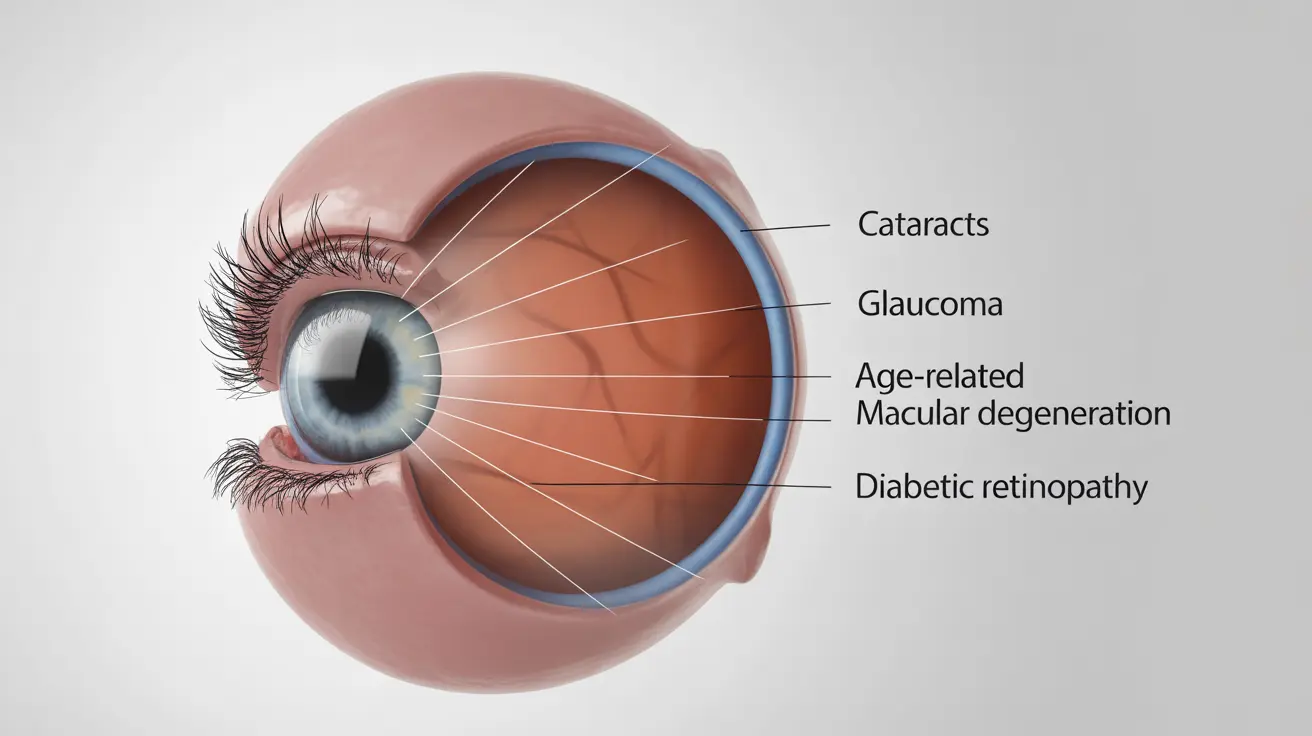Vision loss and blindness affect millions of people worldwide, impacting their daily lives and independence. Understanding the main causes of blindness is crucial for early detection, prevention, and proper treatment. This comprehensive guide explores the primary conditions that can lead to vision loss and discusses essential prevention strategies and treatment options.
Common Causes of Vision Loss and Blindness
Cataracts
Cataracts represent the leading cause of blindness globally, particularly affecting older adults. This condition occurs when the eye's natural lens becomes cloudy, resulting in blurred vision and increased sensitivity to glare. Early symptoms include difficulty reading, driving at night, and distinguishing colors.
Glaucoma
Glaucoma develops when increased pressure within the eye damages the optic nerve. This condition often progresses without noticeable symptoms in its early stages, earning it the nickname "the silent thief of sight." Regular eye examinations are crucial for early detection and prevention of vision loss.
Age-Related Macular Degeneration (AMD)
AMD affects the central portion of the retina, called the macula, leading to loss of central vision while peripheral vision remains intact. This condition primarily affects people over 60 and can severely impact activities like reading and facial recognition.
Diabetic Retinopathy
This diabetes-related complication damages blood vessels in the retina, potentially causing severe vision loss if left untreated. Maintaining proper blood sugar control and regular eye examinations are essential for prevention and early intervention.
Prevention and Risk Reduction
Lifestyle Modifications
Several lifestyle changes can help reduce the risk of developing vision-threatening conditions:
- Maintaining a healthy diet rich in vitamins A, C, and E
- Regular exercise
- Protecting eyes from UV radiation
- Not smoking
- Managing underlying health conditions
Regular Eye Examinations
Professional eye examinations are crucial for early detection and treatment of potential vision problems. The frequency of check-ups should increase with age and for those with higher risk factors.
Vision Problems in Children
Early Warning Signs
Parents should watch for these indicators of potential vision problems in children:
- Squinting or tilting the head to see better
- Frequent eye rubbing
- Poor hand-eye coordination
- Difficulty focusing on objects
- Unusual eye alignment or movement
Childhood Eye Conditions
Several conditions can affect children's vision development, including:
- Amblyopia (lazy eye)
- Strabismus (crossed eyes)
- Congenital cataracts
- Retinopathy of prematurity
Treatment Options and Management
Modern medicine offers various treatment approaches for different causes of vision loss:
- Surgical procedures for cataracts
- Eye drops and laser treatment for glaucoma
- Anti-VEGF injections for wet AMD
- Laser therapy for diabetic retinopathy
- Vision rehabilitation programs
Frequently Asked Questions
What are the main causes of blindness worldwide, and how do they affect vision differently?
The main causes include cataracts (clouding of the lens), glaucoma (optic nerve damage), AMD (central vision loss), and diabetic retinopathy (damage to retinal blood vessels). Each condition affects vision uniquely, from general blurriness to specific areas of vision loss.
How can you prevent or reduce your risk of developing the most common causes of blindness?
Prevention strategies include regular eye exams, maintaining a healthy lifestyle, protecting eyes from UV radiation, managing chronic conditions like diabetes, and eating a balanced diet rich in eye-healthy nutrients.
What are the first signs and symptoms that might suggest you are at risk for vision loss?
Early warning signs include blurred vision, difficulty seeing at night, increased sensitivity to light, seeing floaters or spots, and changes in color perception. Any sudden changes in vision should prompt immediate medical attention.
What treatment options are available for conditions like diabetic retinopathy, retinitis pigmentosa, and optic neuritis?
Treatment options vary by condition but may include laser therapy, medication, surgery, or specialized therapies. The effectiveness depends on early detection and proper management of underlying conditions.
Are there special risks or causes of blindness in infants and children?
Yes, children can face unique risks including developmental issues, genetic conditions, and infections. Early detection through regular pediatric eye exams is crucial for preventing permanent vision loss and ensuring proper visual development.




